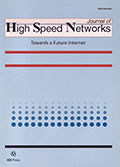Authors: Sharma, Aishita | Singh, Sunil K. | Kumar, Sudhakar | Thakur, Ruchika | Gupta, Brij B. | Arya, Varsha
Article Type:
Research Article
Abstract:
Due to increasing advancements in the field of technology the agricultural sector is experiencing a drastic change, this paradigm shift is the result of integrating technologies like Industry 5.0, Society 5.0, Internet of Things (IoT), Artificial Intelligence (AI), and Remote Sensing. The integration of these technologies helps in multiple aspects such as IoT sensors help in real-time data monitoring which includes parameters such as soil conditions, meteorological aspects„the valuable insights about overall crop health, and also help in promoting informed decision-making in agriculture. Cognitive systems of Industry 5.0, revolutionize manufacturing processes, enabling predictive maintenance, real-time data analyses, and autonomous decision-making
…for increased production efficiency. Implementing digital twin technology further boosts this transformation process by creating dynamic representations of agricultural systems. Digital twins simplify complex interactions for farmers by integrating data obtained from diverse sources. This paper explores the relationship between Industry 5.0, smart farming practices, implementation of the latest techniques like IoT, and digital twins, understanding their impact on precision agriculture, sustainable farming, and efficiency. In conclusion, this study demonstrates how Industry 5.0 technologies, including digital twin technology, possess the potential to revolutionize agricultural operations, enhance crop yields, foster sustainability, and prepare agriculture for the challenges of a rapidly changing global environment.
Show more
Keywords: Smart farming, Industry 5.0, cognitive and intelligent systems, Internet of Things (IoT), precision agriculture, digital twin technology
DOI: 10.3233/JHS-230258
Citation: Journal of High Speed Networks,
vol. 30, no. 3, pp. 477-496, 2024
Price: EUR 27.50





